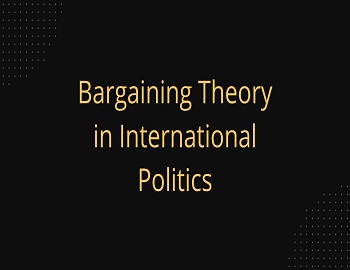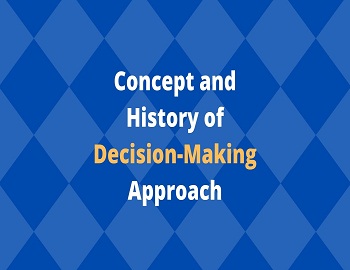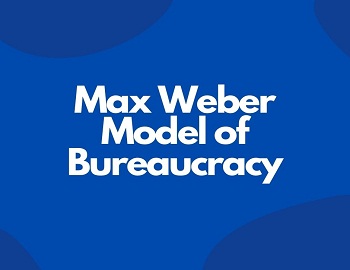Decision-Making Approach in International Politics:
Decision-making is another most important approach to the study of politics. It is particularly very important in the United States where vigorous research is being made in decision-making. The case for the decision-making approach has been presented by a number of scholars who undertook a theoretical exploration of the behaviour of the actors in international relations. The chief contributors of the decision-making approach are Richar Snyder, H. W. Bruck, Burton Sapin, B. Cohen, J. Robinson and Joseph Frankel. Richard Snyder, making for the study of various factors and circumstances that influence and shape the foreign policy of nations in international politics. The result of their research was published in 1954 under the title “Decision-Making as an Approach to the Study of International Politics”. In their research work, Snyder, Bruck and Sapin borrowed ideas from social sciences and translated these ideas into the term of reference of international relations.
The decision-making approach focuses on the question as to how and why a nation acts in international politics. Since the state of knowledge about international politics is far from perfect, the choice of decision-making as a focus is wise. A good place to study is where decisions are made because much of the process of international politics cluster there.
This place of convergence in a governmental organisation is that which specializes in the management of foreign relations. Therefore, good data can come from such organisations when they make decisions. But as the decisions of such governmental organisations called decisional units are seen through the actions of actors in a situation called decision-makers, it is obvious, the decision-making approach suggests the study of the behaviour of decision-makers. It also suggests that decision-makers are influenced in the first instance by their own definitions of the situation. So, our major task here should be to analyse and understand the social world as the decision-makers view it. The decision-makers are also influenced by the setting in which foreign policy decisions are made. The setting has two aspects: external and internal.
External setting includes all the factors and conditions in the total situation of the movement of international politics. The internal setting comprises the personalities, roles, organizations in the decisional unit, physical and technological conditions, basic values and goals, and the organisational influence operative in society. However, there are great differences among the advocates of this approach as to what should be the focus of enquiry.
Alexander and Juliette George, the leading exponents of the decision-making approach, place great emphasis on the personality factor in decision-making. They opine that by studying and analyzing various aspects of the personality of decision-makers we can well understand their impact in the formulation of their foreign policy. Bernard Cohen believes that in studying the foreign policy of any nation, we should analyse the interaction between official and non-official actors who participate in the formulation of foreign policy; general climate of public opinion, political interest group, the media of mass communication, specific committees of the legislature and finally specific agents in the executive branch. Roger Hillsman, though somewhat similar to Cohen’s approach, holds that the interaction between the executive and the legislative branches of the government determines the nature of the foreign policy of any nation.
“Decisions” and “decision-making” currently command increasing attention as objects of study in social sciences. Judith Shaklar has observed that in tracing the development of the phenomenon that is called “decisionism”, no one interested in social ideas can fail to notice how large a part, the word “decision” has, of late, come to play in the vocabulary of moral and political discourse”.
Origin and Sources: The decision-making approach developed by Richard S. Snyder and his colleagues after the second world war was presented in the book “American Foreign Policy Formulations: Principles and Programs” published in 1954 and in another book “Decision-making as an Approach to the study of International Politics”, published in 1954. The initial draft expounding the approach was circulated by Snyder to his colleagues at Princeton University in June 1954. Snyder made a distinction between the “Static analysis” which was used by structural-functionalists to the study of politics and the “dynamic analysis” which was possible only through the decision-making approach. Snyder says that the decision-making approach, based as it was on “process analysis” was capable of dealing with “dynamic situations”.
Synder divides the factors that operate on the decision-maker into three, the internal setting, the external setting and the decision-making process. The “internal setting” is the society for which the officials make decisions. It includes, besides, public opinion major common organizations, major characteristics of social organization, group structure and functions, major institutional patterns, basic social processes, and social differentiation and specialization. The external setting consists of the actions and reactions of other states and the societies for which decision-makers act and the physical world. Then there are “decision-making processes” which consist of three main sub-categories: (a) spheres of competence, (b) communication and information and (c) motivation. They include roles, norms within the government in general and the particular unit which makes the decision. S. P. Verma writes that the decision-making framework embraces a complex and interdependent set of social, political and psychological processes for the study of which Snyder in the tradition of behavioural political scientists advocated the use of a large number of concepts developed in sociology, social psychology, and psychology through which alone the perceptions, motives, experiences and interactions of the decision-makers could be analysed”.
According to Bates, “a decision-making process” involves “a decision-maker, an environment in which the decision-maker must operate a set of actions available and a set of goals to be accomplished”. An “optimum decision” is one that “follows from a procedure which chooses one of a set of actions consistent with the indicated importance of the goals”. Snyder says that “any model of decision-making must include some measures of the efficiency of an action for a goal, a measure of the value or importance for the goal, and a measure of the adequacy or effectiveness of the selection procedure”. Snyder defines decision-making as a “process which results in the selection from a socially defined, limited or problematical, alternative project (that is, course of action) of one project to bring about the particular state of affairs envisaged by the decision-makers”.
Mention may also be made about the writings of other political thinkers. “Environmental Factors in the Study of International Politics” by Harlod and Marget (1957); “The Common Defence”; “Strategic Programmes in National Politics” by Samuel P. Huntington (1961); “National Leadership and Foreign Politics” by James N. Rosenan (1962); “Congress and Foreign Policy Making” by James A. Robinson (1962); “Conduct of New Diplomacy” by James L Mecamy (1964) and “Qualitative International Politics”; “Insights and Evidence” by James N. Rosenan (1977) etc.









Comments (No)